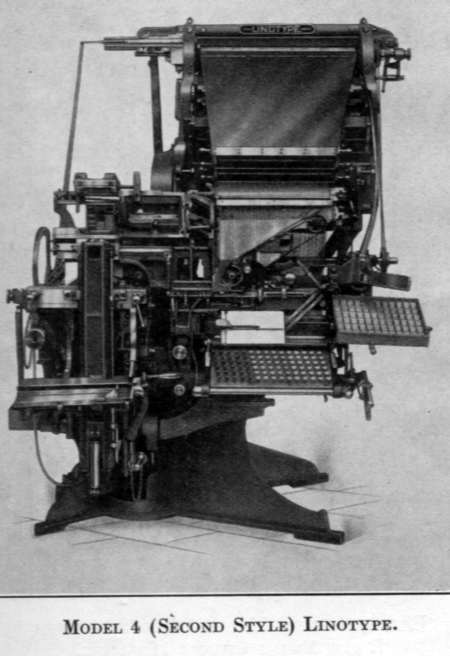THIS MACHINE is the same as Model 27 with the addition of one, two or three wide 34-channel auxiliary magazines, which enable it to carry more faces and slightly larger faces than even the Model 27.
Wide 36 point and condensed faces up to 60 point can be run, with the caps in an auxiliary and the lower case in the cap side of one of the main magazines.








